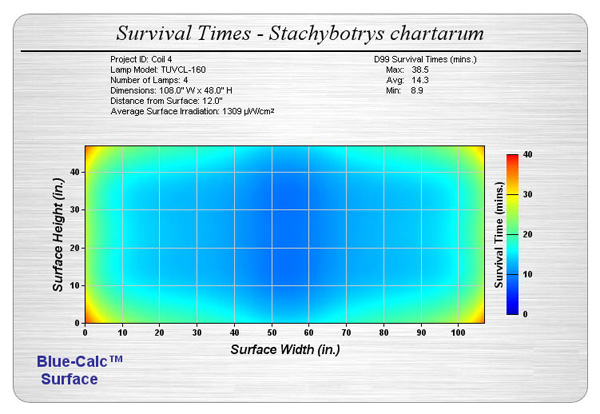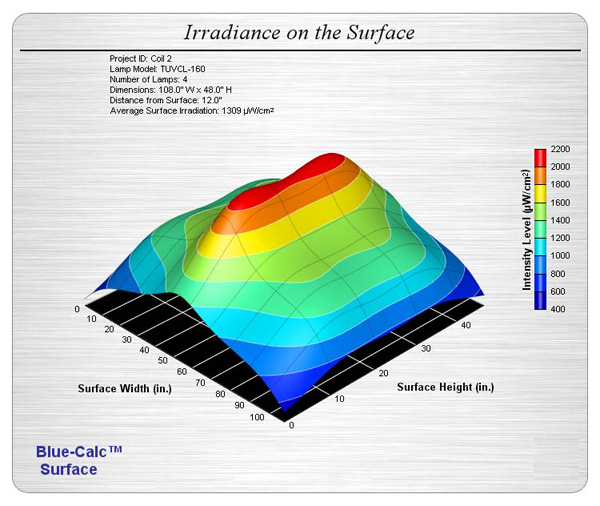Indoor Air Quality (IAQ) has rightfully come to the forefront in HVAC system design, maintenance and operation. In this context, UVGI for HVAC systems has become a critical component for commercial buildings in the region. Mike Walrath, arguing that HVAC UV lamps are more effective when properly sized and configured, gives useful pointers.
Indoor Air Quality (IAQ) has rightfully come to the forefront in HVAC system design, maintenance and operation. In this context, UVGI for HVAC systems has become a critical component for commercial buildings in the region. Mike Walrath, arguing that HVAC UV lamps are more effective when properly sized and configured, gives useful pointers.
Ultraviolet germicidal irradiation (UVGI) is now a standard for most air conditioning applications. Engineers believe that UVGI is effective for inactivating the majority of mould, bacteria, viruses and other biological contaminants that either reproduce on coils and HVAC system interior surfaces, or circulate throughout the building via the airstream.
A 2012 study by international air cleaner equipment test labs, Airmid Healthgroup (AHG), Dublin, Ireland, recently validated UVGI as “highly effective” at inactivating microbes in an HVAC unit environment. The third-party study used a custom-built ASTM/AHAM environmental test chamber to simulate a typical building’s indoor environment with an HVAC air handler providing a 73°F (23°C) temperature – a 55% relative humidity and airflow velocity of 492 fpm (0.93 m3/sec). A single pass test was also performed on an ASHRAE Standard 52.2 test duct system.
Using sizing software for optimal effectiveness
Despite the efficacy of UVGI lamps, issues about sizing, placement, lamp output, configuration and other specifications persist among a section of engineers, installing contractors and building maintenance staff, especially in the Middle East.
Until recently, engineers or design/build contractors simply guesstimated UVGI sizing and placement. Two problems occur with this method:
Fortunately, guesstimating is no longer needed because some UVGI system manufacturers today offer free online sizing software. The engineer, contractor or building engineering department simply fills out an online form that prompts many parameters, such as enclosure dimensions, air velocity and air handler/coil model. The software, then, detects any inadequate coverage or insufficient microbe inactivation time in compliance with UVGI industry’s D99 criteria – a dose resulting in a minimum 99% inactivation.
Output data recommends selected lamp model and parameters, number of lamps, lamp locations, UV power, electrical power requirements, each lamp’s peak irradiance, in-duct irradiance (µW/cm2), and microbe inactivation calculations.
Some programs go well beyond basic sizing and perform algorithmic mathematical calculations for factors such as interior surface reflectivity. Duct material surfaces, such as stainless steel, galvanised steel, aluminium and even interior insulation, have different degrees of reflectivity, which is a mirror-like effect that can intensify UV light. A higher reflectivity equates to a higher microbe disinfection rate and the potential for cutting project costs by reducing the number of needed UV lights or their output performance.
Some software sizing programs can also calculate necessary system outputs for a specifically targeted biological contaminant, such as tuberculosis, a bacterium that may require more UV output or system passes than other microbes, depending on the application.
Additionally, some manufacturers use in-house engineering review services to assure that the resulting UVGI equipment recommendations match the HVAC application. A service that goes beyond just software recommendations is especially helpful when there are unconventional HVAC configurations or project parameters.
Some manufacturers also accompany text results with design and analysis colour performance graphs and charts. These are invaluable in sales or bid presentations.

Other UVGI specification considerations
Other specification considerations include power supply type and location, lamp outputs, installation rack systems and other factors. Like most products, UVGI comes in good, better and best classifications. The quality of the specification will affect future coil maintenance, as well as the UVGI and HVAC system lifecycles.
Generally, high quality UVGI systems are maintenance-free, with the exception of routine lamp replacement. UV lamps are available in one-year or two-year models. While two-year models are more expensive, the extended lifecycle will cut replacement labour by half or more, compared to one-year lamps. Lamps generally come in 15-, 32-, 46- and 60-inch-long models. The most reliable lamps have sturdy filaments with a cathode guard and a hard quartz glass lens and a secondary hard quartz shield, for added stability. Outputs are typically rated as standard with at least 4-µW/inch arc length and high output with at least 10-µW/inch arc length.
Instead of a lamp-fixture- mounted ballast, which can be as problematic and as unreliable as conventional fluorescent lamp ballasts, more reliable UVGI systems use remote power supplies that provide power to the lamp(s) via a marine-grade, water-resistant cable connection. When mounted outside the air handler, remote power supplies will have longer lifecycles than power supplies and/or ballasts designed for mounting inside the humid, corrosive environment of the unit. Thus, some manufacturers offer lifetime warranties on remote power supplies, which demonstrate confidence in the equipment’s longevity.
Besides remote functionality, a power supply should have universal voltages to accommodate any country’s electrical requirements.
UV lamps are typically installed on the coil’s supply side, which along with the underlying drain pan, is the wettest and most prone area for mould growth.

Handling microbes and VOCs in the same system
While UVGI is proven effective at sterilising microbes, it has no effect on volatile organic compounds (VOCs), such as chemicals found in cleaning solutions, or formaldehydes, chlorine and d-limonene found in furnishings, paint and coatings. VOCs are known human respiratory irritants that can produce breathing problems, headaches and allergic reactions. Once inside a building from outdoor air or from off-gassing from within, the air handler continually re-circulates VOCs.
In the past, IAQ-oriented engineers have specified UVGI and separate gas-phase air purification systems. The latter uses activated carbon-based media to adsorb and hold VOCs through a chemi-sorption process.
Now some UVGI manufacturers have streamlined the process by combining activated carbon gas-phase air purification and photocatalytic oxidation (PCO) into one unit.
The system’s UV lamps that disinfect also stimulate a PCO chemical reaction when placed in close proximity and shone on the gas-phase air purification’s titanium dioxide-infused carbon media. PCO by itself is somewhat effective at reducing airborne VOCs. However, using titanium dioxide-infused carbon media holds onto VOC contaminants and gives the PCO process time to convert them into harmless carbon dioxide (CO2) and water vapour (H2O). This also eliminates expensive media replacements associated with independent gas-phase air purification systems.
Unlike many conventional air purification and adsorption methods, the addition of PCO transforms contaminants versus just holding them on an adsorption substrate. Additionally, this process is effectively performed at ambient temperatures and pressures, thus additional energy to cool or heat the airstream isn’t required.
UVGI systems with gas-phase air purification may also qualify as “Air Cleaning Equipment” for the IAQP procedure – the new energy-conserving outdoor air reduction provision now permitted by ASHRAE Standard–62.
Today’s sizing, placement, output and configuration software offers progressive engineers with the tools to specify the ultimate UVGI system that will provide state-of-the-art IAQ for building owners.
The writer is the Commercial Products Sales Manager of Fresh-Aire UV. He can be contacted at mike@ freshaireuv.com
Copyright © 2006-2025 - CPI Industry. All rights reserved.